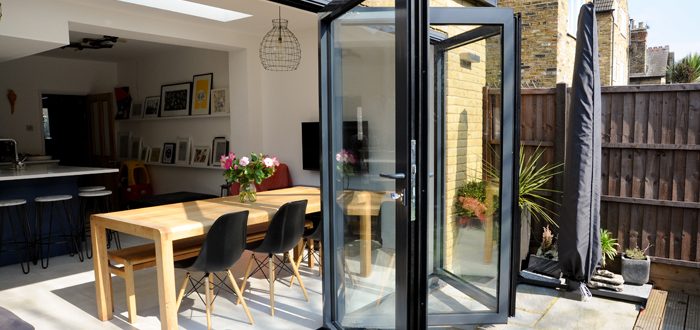There are a number of factors that can impact the overall feel of your living space. This won’t come as a surprise, of course: there’s a reason that interior design remains one of the biggest industries in the UK! How, though, can your doors improve the overall aesthetic of your home?
We’re going to take a look.
Colours
Needless to say, colour is probably the most important factor to consider when looking at new door designs. Colour can have a heavy impact on mood, and the overall impression your design’s seeking to give.
There are typically three approaches to a colour scheme:
- Tonal – using varying tones of one colour through the room, or more than one colour but the same depth of tone
- Harmonious – picking colours next to or near each other on the wheel
- Complementary, or ‘contrasting’ – colours that lie opposite each other on the wheel
How does this relate to doors? Simply that a door will often help give your colour scheme a starting point. If you’re investing in a high-quality wooden door, you’re going to want to use colours that emphasise the quality of the wood. If, for instance, you’ve had your door stained dark, you’re more likely to look at a contemporary colour scheme that emphasises blacks and whites. On the other hand, a brighter natural wood will often call for a warmer, less monochrome design.
Flooring
It’s a given that your doors and flooring are going to impact each other. As we mentioned above, the colours of these respective features will need to blend effectively. Subsequently, your door choice will impact on the flooring you use.
- A black floor, for instance, can sometimes ‘flatten’ the feel of a room unless it’s balanced out by the right lighting choices. Lighter toned furniture – and lighting that enhances other objects in the room – can help.
- A very light – or white floor – can have the opposite effect, opening up even the smallest rooms and giving them a simple, rustic feel. There are few more effective ways of making a room feel more spacious than by using lighter flooring.
These are two examples, but the important thing to emphasise is that the door – in impacting the design of the floor – consequently begins to impact the other aspects of the design interior.
Textures
Textures are another vital element to consider when planning your interior design. The right textures used in the right way can add real depth and dimensions to a room. Your choice of door should definitely influence the other materials you use in the design.
It’s known, for instance, that timber – when finished in the right way – can help to reflect light across the space, making it brighter. Carpets, on the other hand, don’t. So, if you’ve got a brighter wooden door, it may be that you’ll want to have a carpet installed in order to prevent the space becoming too bright, especially if your colour choices elsewhere are also bright.
If, on the other hand, your space isn’t naturally well-lit and your door’s made of a darker wood, you might prefer a wooden floor to help give the space more light.
Smoother textures help to make a room feel lighter, and as such are often contrasted with rougher materials elsewhere. If you’ve got a smooth wooden door in place, for example, it can help the balance of the room to have a rougher, coarser carpet or rug on the floor.
Finally, textures can also change the feeling of warmth. Smoother materials usually make a space feel cooler. So, if you’ve got a smoother wooden door in place, having a courser finish on the sofa or armchairs can help balance out the room, making it feel more comforting.
Get in touch
If you’re interested in finding out more about how doors can impact your interior design, or just need help planning your space out, give Urban & Grey a call today on 020 8979 6367: we’ll be happy to help.

